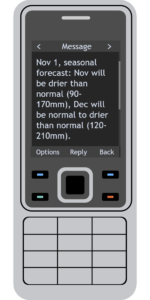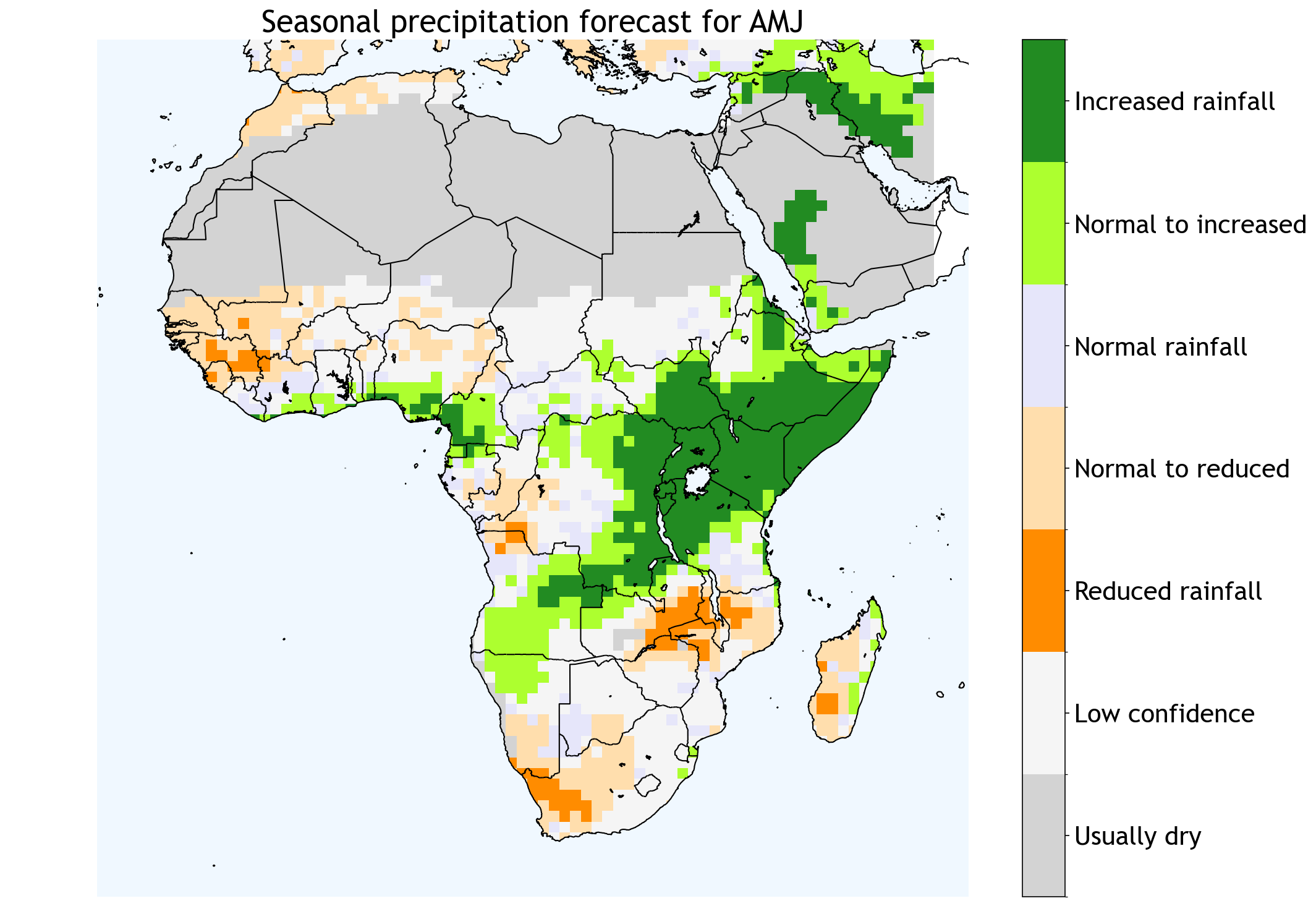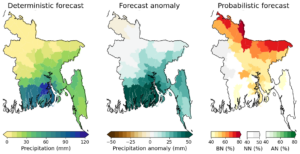Seasonal forecasts
Precipitation and temperature forecasts up to 5 months ahead
Seasonal weather forecasts can assist in long-term planning and strategic decision making. Such forecasts on seasonal time scales can provide an indication of the upcoming months that are either dryer or wetter than normal. We use the information from the Copernicus Climate Change Service (CCS). The output of the various CCS models is combined and compared with the 24 year model climatology and 39 years of satellite precipitation data or 30 years of temperature re-analysis data to increase forecast skill. Our data analysis results in categorial monthly rainfall indicators, for example ‘increased rainfall’ or ‘normal rainfall’.
Our seasonal forecasts provide the monthly indicators up to 5 months ahead. These indicators can be converted into concrete advices and risk information which is essential for agribusiness, the financial sector and energy sector.
A few examples;
- Drought risks for the next season and crop selection support for agronomists
- Portfolio risk estimates for outstanding loans
- Strategic planning of sustainable energy supply
Are you interested in our seasonal forecasting service? Please contact us!
An example of the seasonal forecast outlook over Africa for the next 3 months (the initials at the end represent the months) is shown below.
Sub-seasonal forecasts
To bridge the gap between the short term weather forecasts (up to 10 or 15 days) and the long term seasonal forecasts (monthly forecasts up to 5 months ahead), sub-seasonal forecasts are available. Sub-seasonal forecasts are weekly forecasts up to 6 weeks ahead. These forecasts are at the forefront of the current science and implemented more and more.
Weather Impact has assisted the Bangladesh Meteorological Department (BMD) in the skill assessment and implementation of sub-seasonal forecasts. There, weekly forecasts of temperature and precipitation were implemented up to 4 weeks ahead. The forecasts are used by the Department of Agricultural Extension (DAE) to provide strategic advice to farmers on farm management planning.
Fig. 3 Three different forecasts.
The first deterministic forecast shows the average value of precipitation for a particular week.
The second anomaly forecast shows the difference between the average value for a particular week with the average climatology of the last 20/30 years.
The third probabilistic forecast shows the chance of hotter/colder temperature or wetter/drier conditions, compared to the average climatology.
Are you interested in the assessment and implementation of sub-seasonal forecasts for your region? Please contact us!




